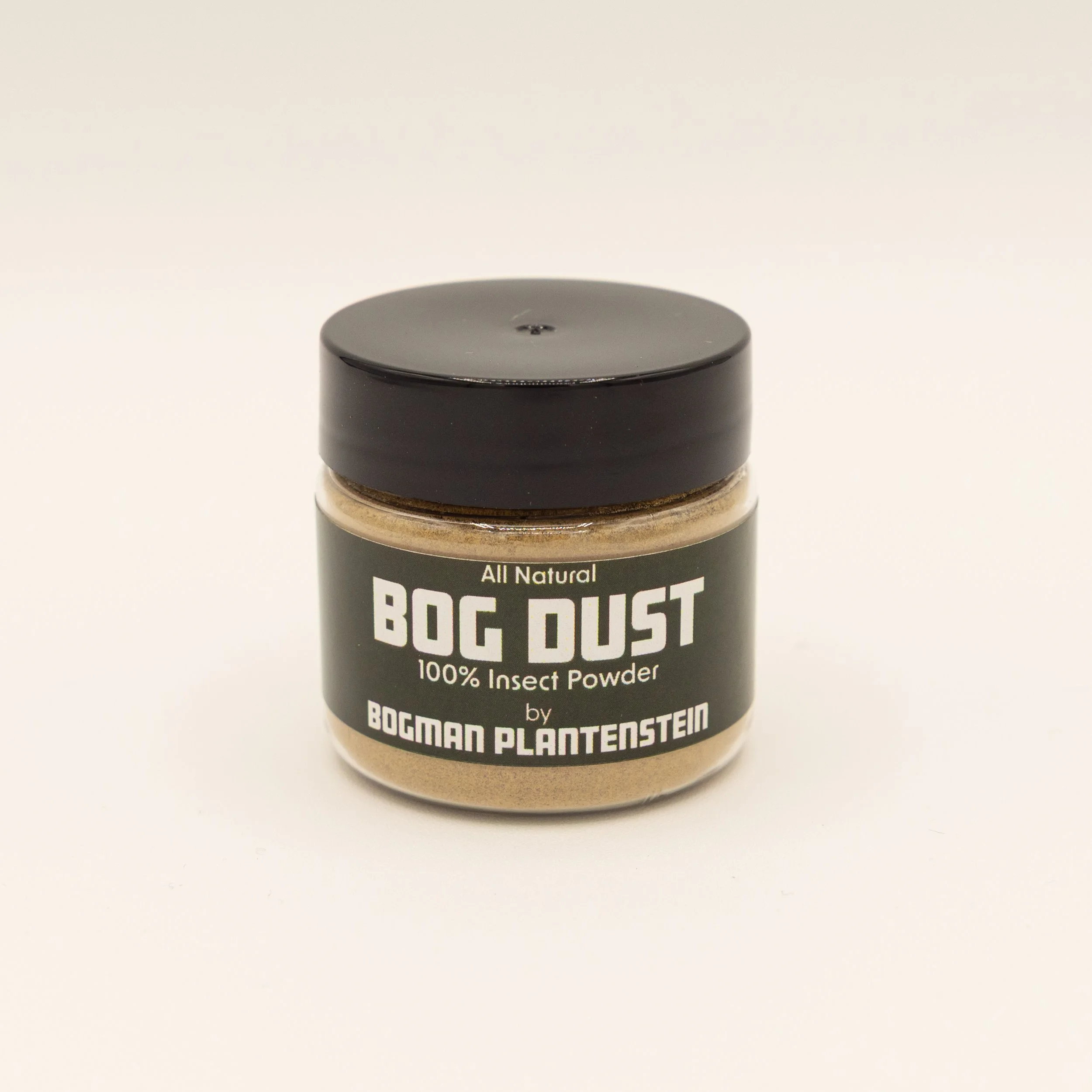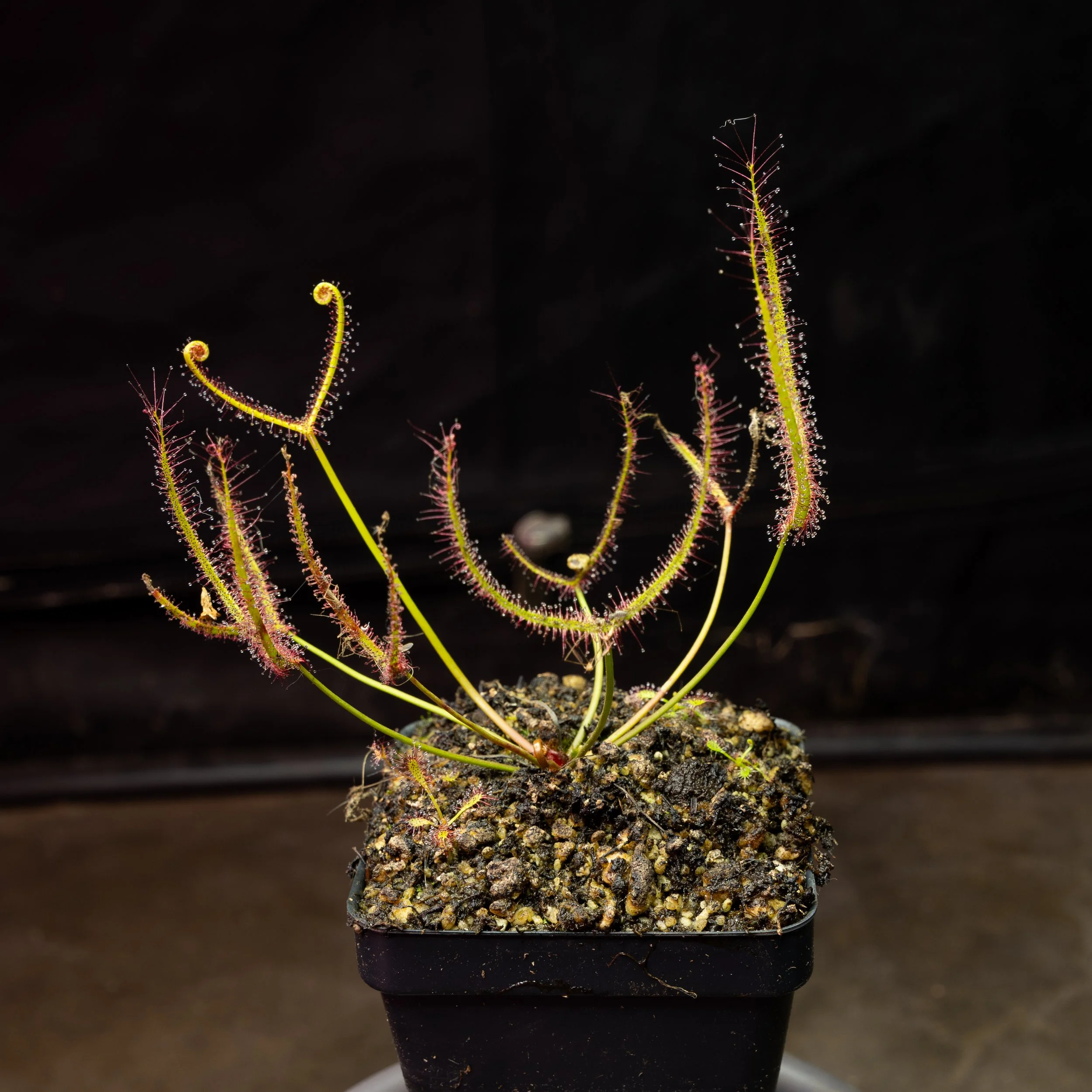 Image 1 of 4
Image 1 of 4

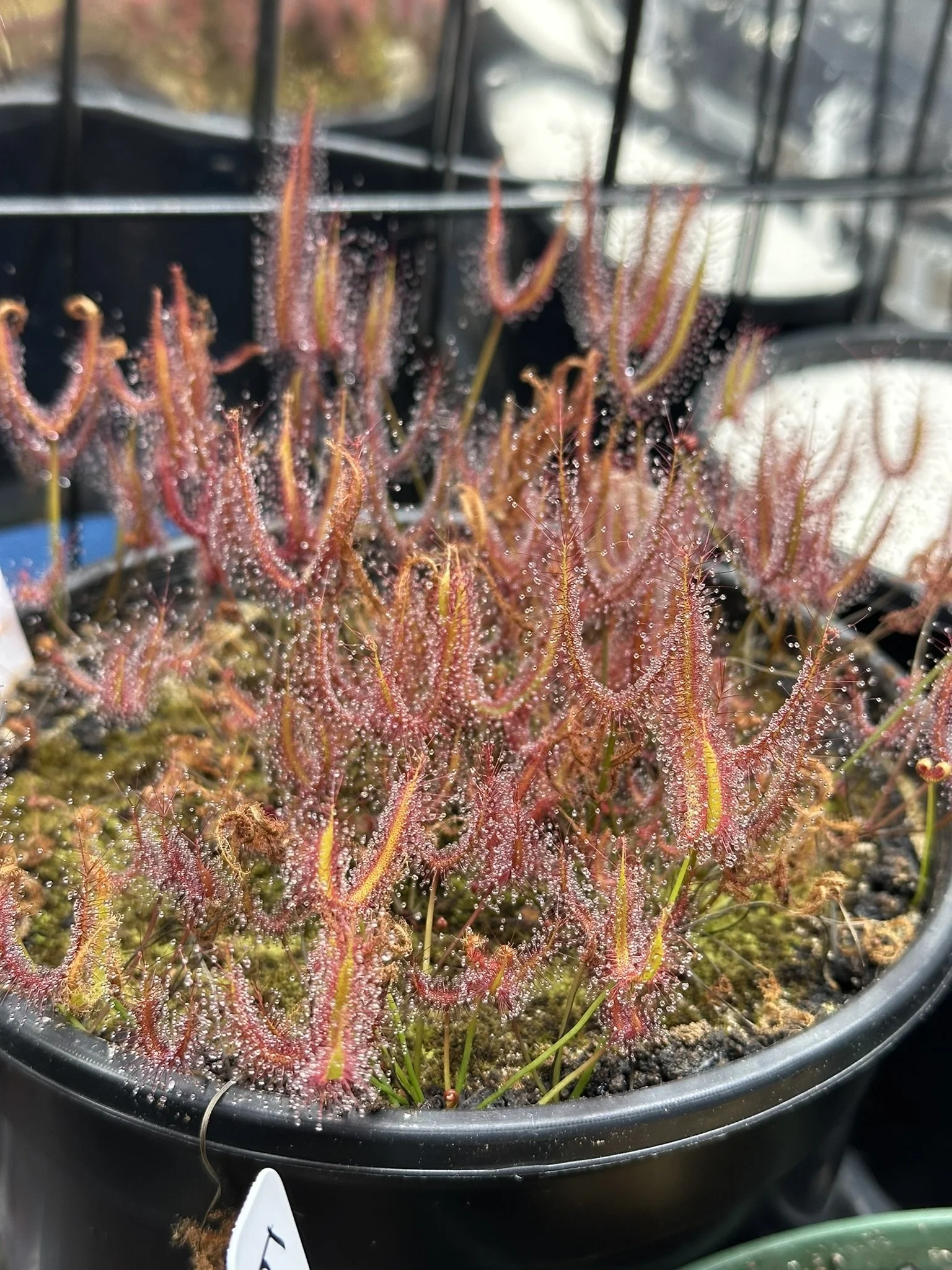 Image 2 of 4
Image 2 of 4

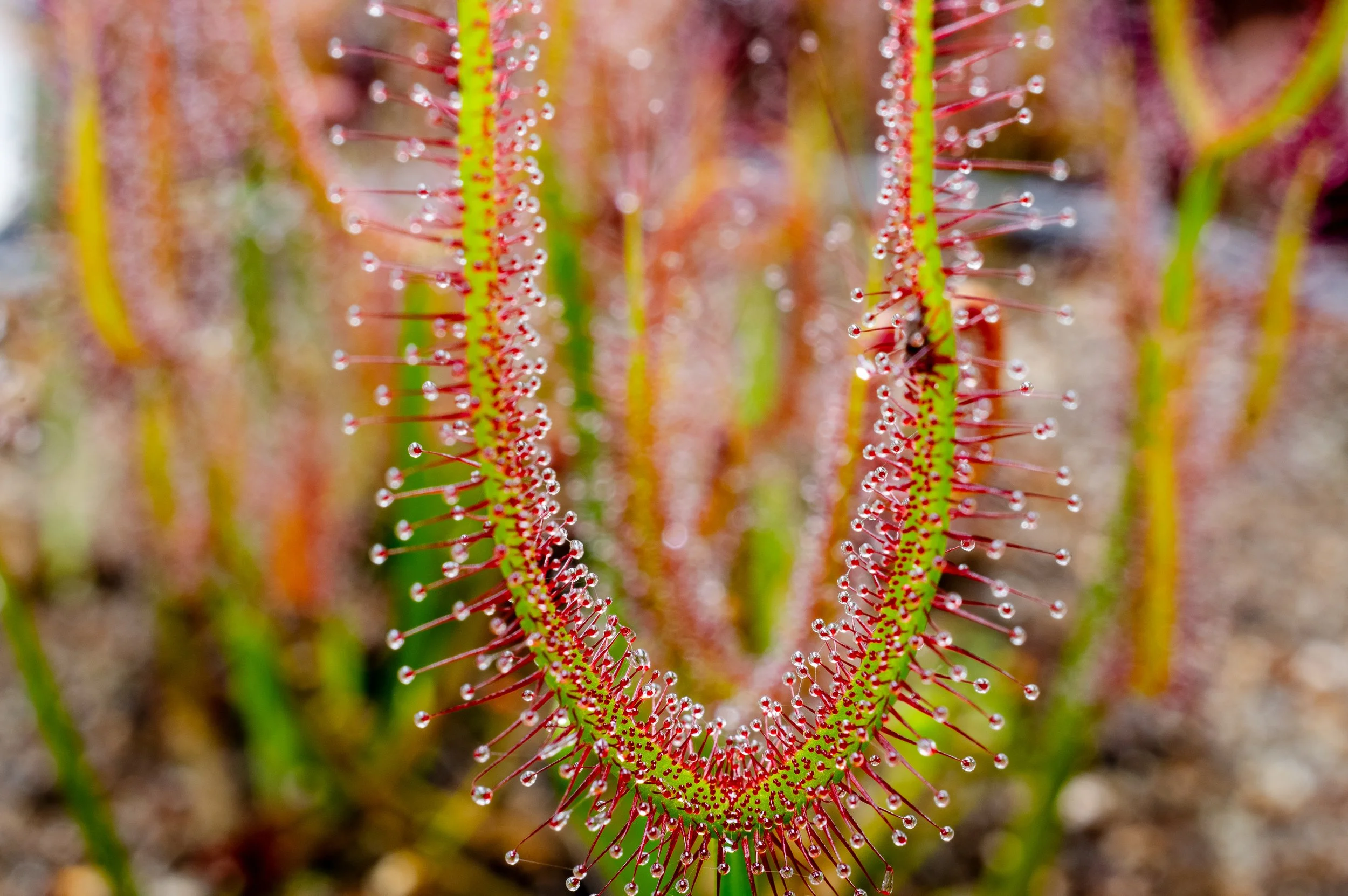 Image 3 of 4
Image 3 of 4

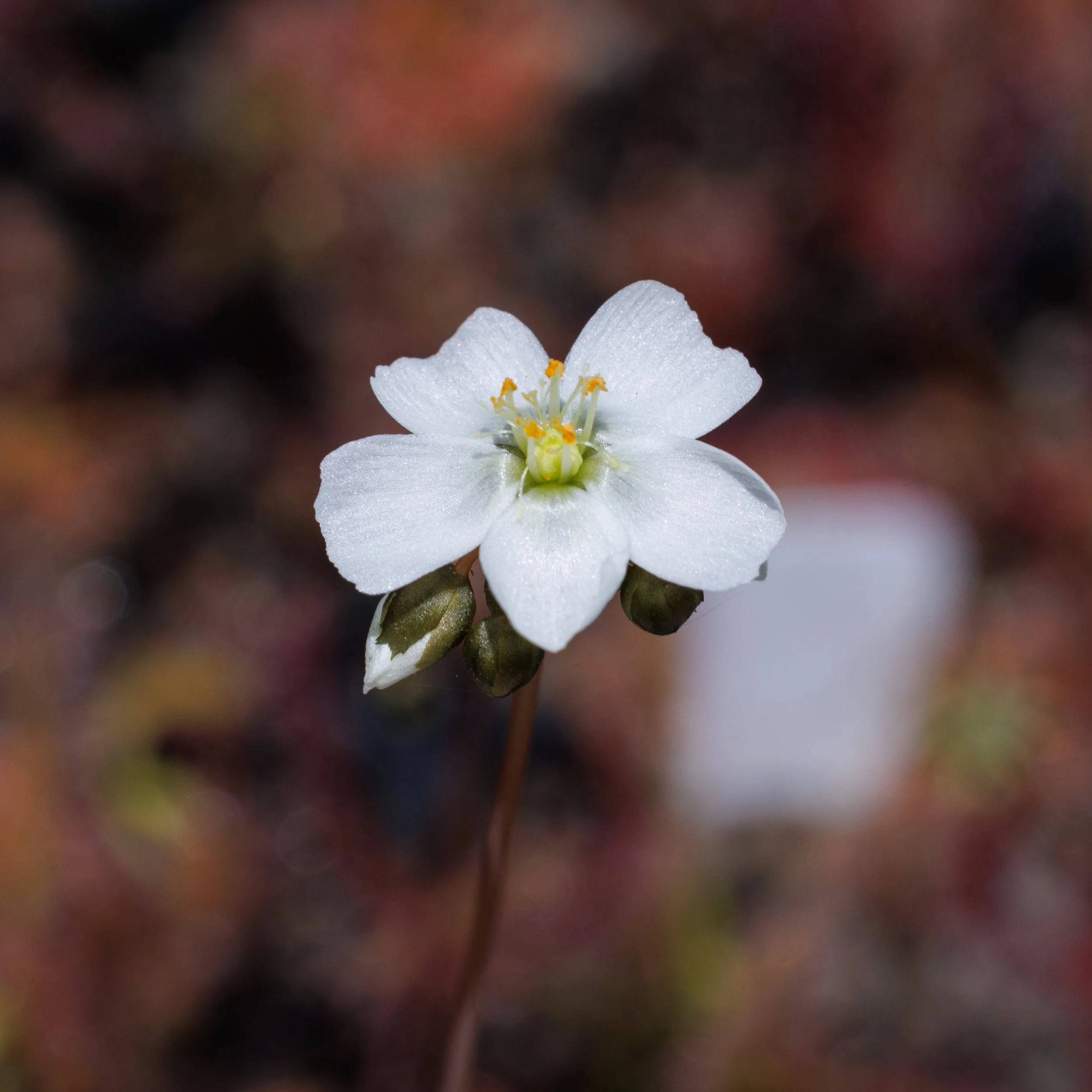 Image 4 of 4
Image 4 of 4





Drosera binata
Description
Drosera binata is a unique species known as the Fork-Leafed Sundew for the split/branching of the dewy parts of the leaves. While there are many forms of Drosera binata varying in degree of branching, the standard “T-form” typically only splits once into a T or Y shape. Larger plants may split again into 4 total points. It grows into dense clumps of upright leaves that can easily spread to fill their pot. This listing is for unnamed forms of self-pollinating “T-form” that will split into 4 total points quite readily. All “T-form” binata have an obligate winter dormancy that lasts for a few months, induced by shorter photoperiod and cooler temperatures.
Drosera binata is found in many locations in eastern Australia and New Zealand where it can vary from a single fork (“T-form”), to double forks (4 points), to over 70 points in certain forms. The “T-form” generally grows leaves from 4-6” long which turn an olive or red color in bright light. All T-forms seem to require a winter dormancy during which they will die back completely to a small bud or to the roots. The T-form is much hardier and can survive cold temperatures down to around 20F. In spring, they will emerge with rapid and vigorous growth. They have white flowers and some forms will readily self-pollinate and produce massive quantities of seeds.
Small plants will be potted in 2.5”W x 3.5”H pots with leaves 1-2” long and ~1” wide at the top. Medium plants will be potted in 2.5”W x 3.5”H pots with leaves 2-3” long and 1-2” wide at the top. Large plants will be potted in 3.5”W x 5”H pots with leaves >3” and over 2” wide at the top.
WINTER SHIPPING: Cold winter temperatures (<40F) require heat packs which will be automatically included with the shipment if necessary. This species goes dormant during winter where the leaves die back to a small bud at the surface.
Growing Information
Climate: Temperatures between 40-90F are best. These seem to do fine at different humidity levels. The “T-form” has an obligate winter dormancy during which photoperiod should be decreased.
Light: Part to Full Sun or at least 20W per square foot of LED lighting. These grow best in high light. Photoperiod should be adjusted for winter to induce dormancy.
Water: Water with the tray method of roughly 1-2” of water. Only use distilled, reverse osmosis, or rainwater because tap water is toxic to carnivorous plants due to high mineral content and chlorine.
Soil: Soil can be 50% peat: 50% perlite, though most peat or sphagnum based mixes will be good.
Feeding: Feed Insect Powder or lightly spray leaves with dilute Dynagro Foliage Pro or MaxSea at roughly 400ppm. Feed every 2-4 weeks to stimulate strong growth.
Description
Drosera binata is a unique species known as the Fork-Leafed Sundew for the split/branching of the dewy parts of the leaves. While there are many forms of Drosera binata varying in degree of branching, the standard “T-form” typically only splits once into a T or Y shape. Larger plants may split again into 4 total points. It grows into dense clumps of upright leaves that can easily spread to fill their pot. This listing is for unnamed forms of self-pollinating “T-form” that will split into 4 total points quite readily. All “T-form” binata have an obligate winter dormancy that lasts for a few months, induced by shorter photoperiod and cooler temperatures.
Drosera binata is found in many locations in eastern Australia and New Zealand where it can vary from a single fork (“T-form”), to double forks (4 points), to over 70 points in certain forms. The “T-form” generally grows leaves from 4-6” long which turn an olive or red color in bright light. All T-forms seem to require a winter dormancy during which they will die back completely to a small bud or to the roots. The T-form is much hardier and can survive cold temperatures down to around 20F. In spring, they will emerge with rapid and vigorous growth. They have white flowers and some forms will readily self-pollinate and produce massive quantities of seeds.
Small plants will be potted in 2.5”W x 3.5”H pots with leaves 1-2” long and ~1” wide at the top. Medium plants will be potted in 2.5”W x 3.5”H pots with leaves 2-3” long and 1-2” wide at the top. Large plants will be potted in 3.5”W x 5”H pots with leaves >3” and over 2” wide at the top.
WINTER SHIPPING: Cold winter temperatures (<40F) require heat packs which will be automatically included with the shipment if necessary. This species goes dormant during winter where the leaves die back to a small bud at the surface.
Growing Information
Climate: Temperatures between 40-90F are best. These seem to do fine at different humidity levels. The “T-form” has an obligate winter dormancy during which photoperiod should be decreased.
Light: Part to Full Sun or at least 20W per square foot of LED lighting. These grow best in high light. Photoperiod should be adjusted for winter to induce dormancy.
Water: Water with the tray method of roughly 1-2” of water. Only use distilled, reverse osmosis, or rainwater because tap water is toxic to carnivorous plants due to high mineral content and chlorine.
Soil: Soil can be 50% peat: 50% perlite, though most peat or sphagnum based mixes will be good.
Feeding: Feed Insect Powder or lightly spray leaves with dilute Dynagro Foliage Pro or MaxSea at roughly 400ppm. Feed every 2-4 weeks to stimulate strong growth.

